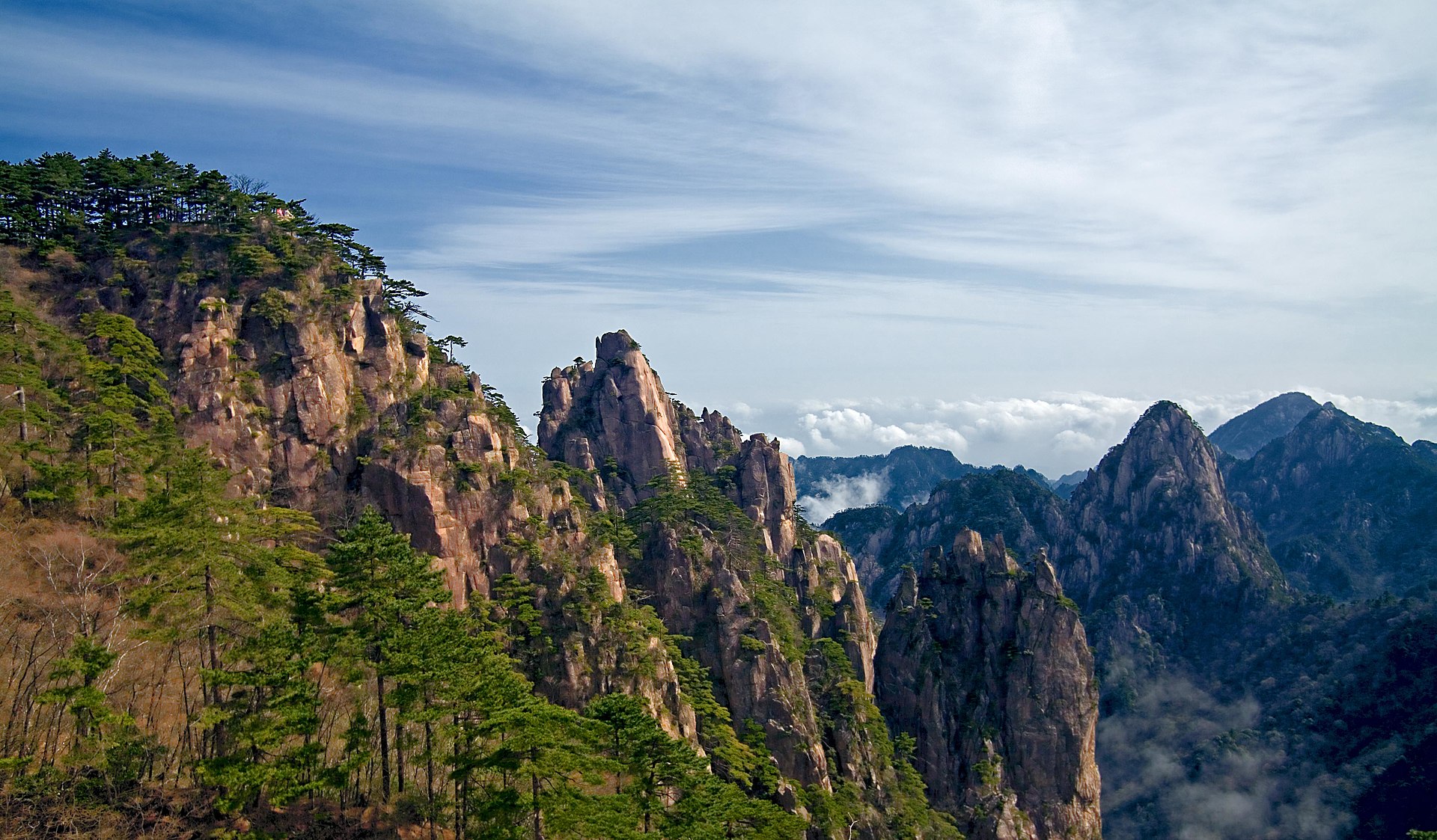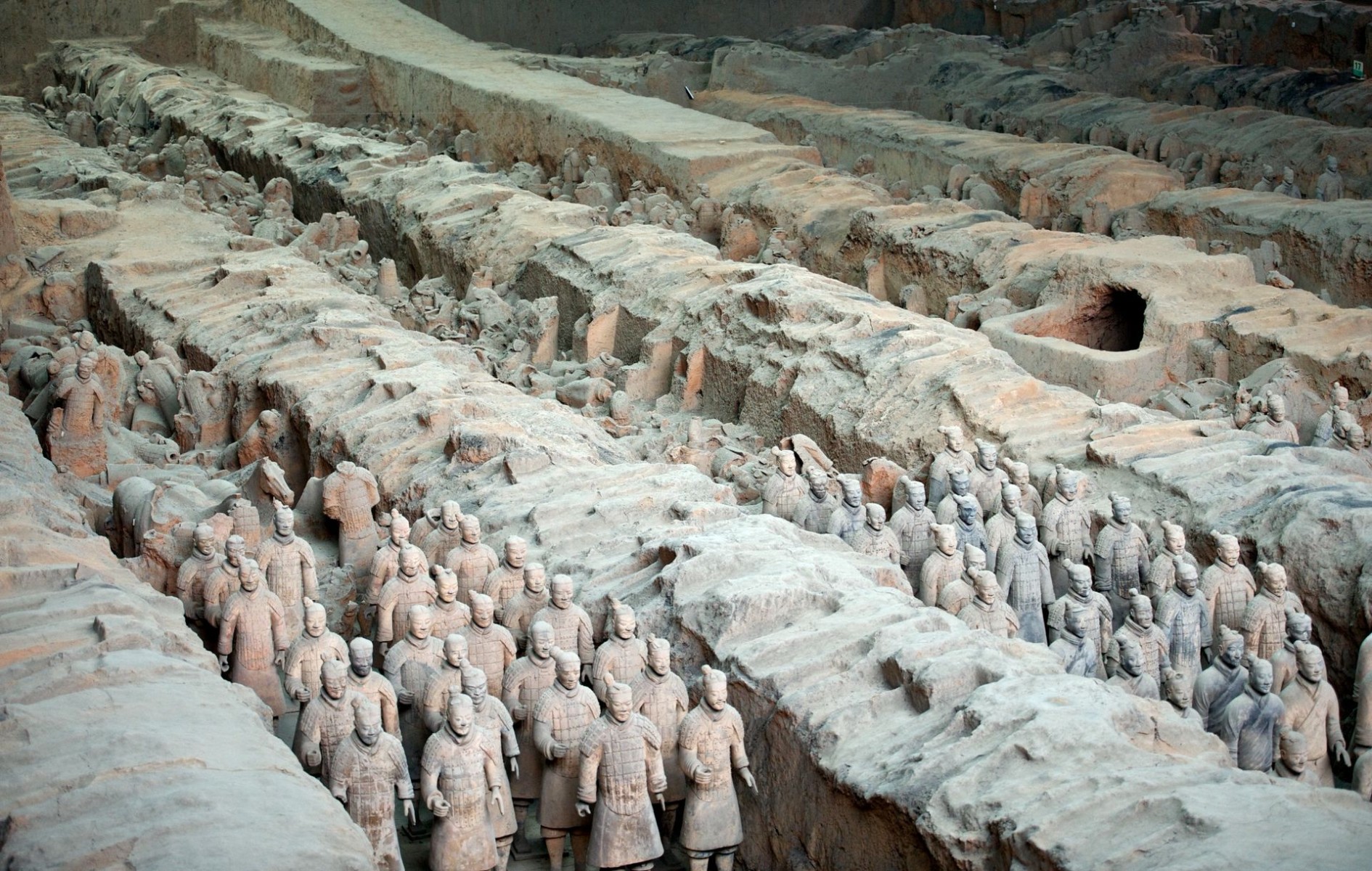There are a total of 53 UNESCO World Heritage sites listed in China, which means you may find yourself wondering where to start. Well, here is our list of a few more well-known and other less publicized locations. With their pure extravagance, majestic beauty or cultural significance, they are worth a place on your list of travel destinations for the future.
Dazu Rock Carvings
Sichuan Province

Image via Wikipedia
This extraordinary group of Chinese religious sculptures and carvings date back to the seventh century AD, and demonstrate a tremendous amount of skill in revealing a combination of Buddhist, Confucian and Taoist beliefs. Earning its place on the World Heritage list in 1999, the Dazu Rock Carvings contain 75 protected sites, where Beishan and Baodingshan are considered the best. In total, the site presents over 100,000 Chinese character inscriptions and 50,000 statues, some reaching 10 meters in height. The carvings were inaccessible for many years and only opened to Chinese travelers in 1961.
Classical Gardens of Suzhou
Jiangsu Province

Image via Wikipedia
The Classical Gardens of Suzhou date back to the sixth century BC, when the city was declared capital of the Wu Kingdom. Today, there are 69 preserved gardens in Suzhou, and in 1997 and 2000, eight of the most exquisite were selected by UNESCO as a World Heritage site. They are a reflection of the skill and artistry of the masters whose techniques created them, and represent the essential elements of classical Chinese garden design known today.
Hongcun Ancient Village
Anhui Province

Image via Wikipedia
This small, traditional village earned its place on the World Heritage list in 2000 because of its long history, well-preserved structures and idyllic surrounding scenery. With architecture dating back to the Ming and Qing dynasties, this 900-year-old village presents beautiful reflective ponds and a unique network of alleyways to wander through after indulging in delicious local cuisine. You’ll find Hongcun Ancient Village at the foot of the famed Huangshan, which is only 90-minutes drive away.
Huangshan
Anhui Province

Image via Wikipedia
Translated to 'Yellow Mountain,' Huangshan is a mountain range in Anhui province with peaks higher than 1,000 meters. The history of Huangshan dates back to the Tang Dynasty in the eighth century, where legend has it that the mountain contained the elixir of immortality. The scenic areas provide over 50 kilometers of footpaths to hike and explore, and the views play a significant role in depicting quintessential Chinese mountain landscape paintings.
Longmen Grottoes
Henan Province

Image via Wikipedia
The Longmen Grottoes are a cave complex from the fifth century, known as a treasure trove of Buddhist art and one of the three most famous grottoes in China. Listed as a World Heritage site in 2000, these impressive stone carvings are devoted to Buddhist religion and took over 400 years to complete. The site includes 2,300 caves, which house over 110,000 Buddhist stone statues, ranging from just 25 millimeters to 17 meters in height.
Mausoleum of the First Qin Emperor
Shaanxi Province

Image via Wikipedia
The Mausoleum of the First Qin Emperor was discovered by farmers in 1974, near the city of Xi'an. While drilling a well, they unearthed the first of more than 8,000 warriors, horses, chariots and weapons, assembled in military formation to guard the emperor’s tomb and help him to rule in the afterlife. History tells us that it took over 700,000 laborers 36 years to complete this extravagant burial site. Living from 250-210 BC, Qin Shi Huang was the ruler who united China, and the Qin Dynasty significantly advanced the social, cultural and artistic levels of the empire. Declared a World Heritage site in 1987, the tomb itself remains unopened, and it is anticipated the size of this mighty terracotta army will continue to grow its ranks as excavation continues.
Sichuan Giant Panda Sanctuaries
Sichuan Province

Image via Wikipedia
This sanctuary in Sichuan is the largest and most significant panda habitat in China and indeed, the world. Listed as a World Heritage site in 2006, it contains more than 30 percent of the world's panda population, along with other threatened animals such as the red panda and snow leopard. The sanctuary runs a volunteer program where visitors can learn about rescuing, feeding and communicating with China's national treasure. And best of all, you can also hold one of these beloved creatures when you visit.
West Lake Cultural Landscape of Hangzhou
Zhejiang Province

Image via Wikipedia
The famed Xi Hu (West Lake) which lies in the middle of Hangzhou city provides an inspired contrast to the hustle and bustle so close to its shore. The legend of the lake, a romantic fable between the snake goddess Bai Suzhen and her human love interest Xu Xian, is emotionally played out during a show each evening, allowing visitors to be swept away by its significance. Listed as a World Heritage site in 2011, the beauty of the lake has influenced painters and poets for centuries. Hangzhou is legendary for the quote attributed to Marco Polo that this is "the finest and most splendid city in the world," the lake's attractions include gardens, pagodas, temples and bridges enveloped by lush vegetation. With many outstanding scenic spots to enjoy around the lake, its mesmerizing beauty changes with the seasons, making it captivating all year round.
Take the UNESCO Quiz
From the list of 53 UNESCO World Heritage sites in China, how many have you visited? Are you a seasoned traveler or do you need to add more destinations to your future travel plans?
Scan the QR code and take the quiz to find out just how much of an expert in China travel you are.

[Cover image via Wikipedia]


















